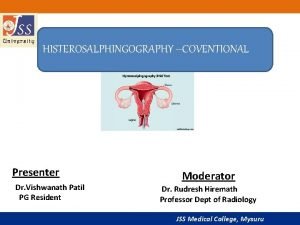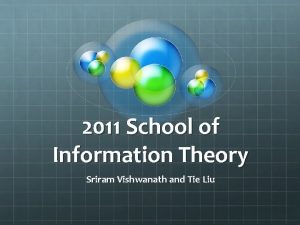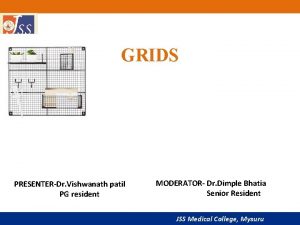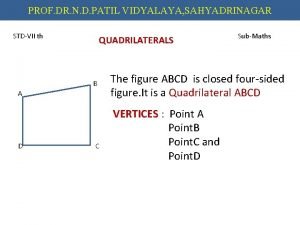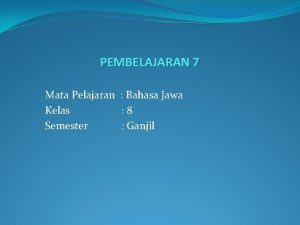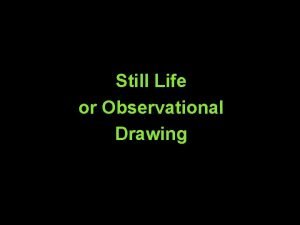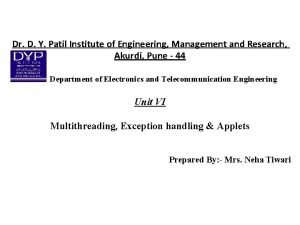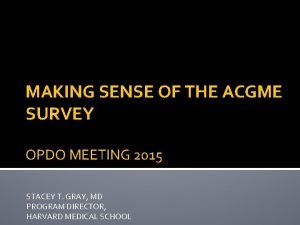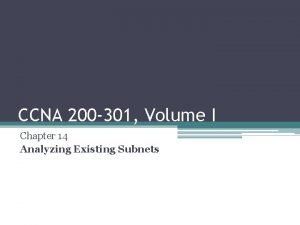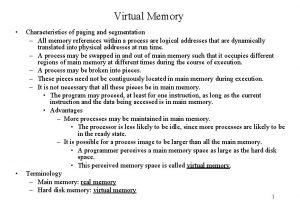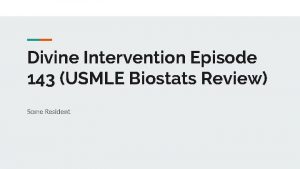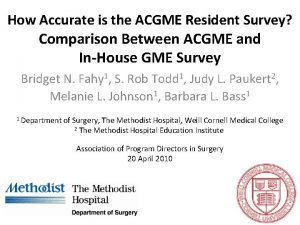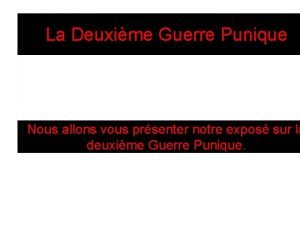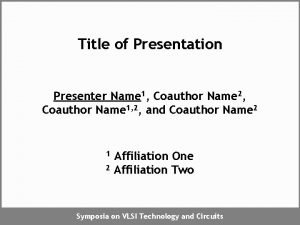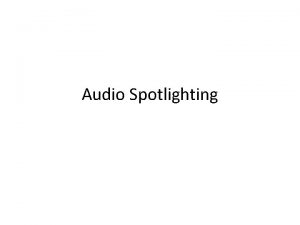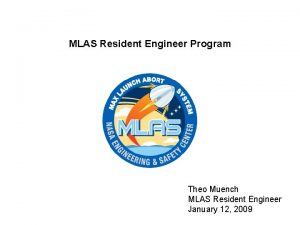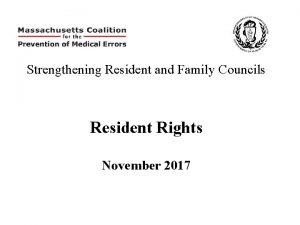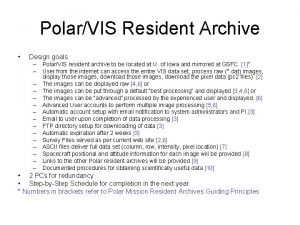HISTEROSALPHINGOGRAPHY COVENTIONAL Presenter Dr Vishwanath Patil PG Resident































































- Slides: 63

HISTEROSALPHINGOGRAPHY –COVENTIONAL Presenter Dr. Vishwanath Patil PG Resident Moderator Dr. Rudresh Hiremath Professor Dept of Radiology JSS Medical College, Mysuru

Defination • Hysterosalpingography is the radiographic evaluation of uterus and fallopian tubes under fluoroscopic guidance. JSS Medical College, Mysuru

INDICATION 1. Infertility (main role) 2. Recurrent spontaneous abortions. 3. Congenital anomalies of uterus. 4. Postoperative evaluation following (a)tubal ligation (b) reversal of tubal ligation. 5. Suspected case of genital tuberculosis 6. To prove tubal occlusion after insertion of transcervival sterilization micro insert (essure). HSG also has a potential therapeutic role in increasing the probability of pregnancy ( especially if oil soluble contrast –lipoid is used) JSS Medical College, Mysuru

CONTRAINDICATION • • • Suspected pregnancy Acute pelvic infection Active vaginal bleeding Recent dilation and curettage Tubal or uterine surgery within last 6 wks. Contrast sensitivity JSS Medical College, Mysuru

PATIENT PREPARATION • Done in first half of menstrual cycle in proliferative phase between 8 th to 12 th day. • Patient to avoid unprotected sexual intercourse from the date of her period until investigation is over. • If periods are irregular , do urine B- hcg. • Exclude active pelvic infection. • Prophylactic antibiotics not routinely recommended (considered in case of bacterial endocarditis) JSS Medical College, Mysuru

Accessory & Equipments • • • Disposable HSG tray is used. Speculum Cotton balls, cup, gauze, drapes. Sponge-holding forceps. 10 ml syringes, lubricating jelly extension tube. Contrast. JSS Medical College, Mysuru

CONTRAST MEDIA • Heuser was the first to report on the use of lipiodol in HSGs. • Lipiodol was gradually replaced by water soluble contrast media for several reasons. JSS Medical College, Mysuru

CONTRAST MEDIA LIPID SOLUBLE (lipiodol) CONTRAST Sharp image Minimal pain Delayed absorption Risk of lipogranuloma formation in case of tubal block/hydrosalpynx. • Intravasation of contrast and possible risk of oil embolism • Need of delayed film • Less often used • • WATER SOLUBLE CONTRAST (iohexol- omnipaque, meglumine diatrizoate-urograffin • Ampullary rugae clearly visualised • Gets absorbed within hours, does not leave residue • Granuloma formation rare • Pain persists after procedure • Prompt demonstration of tubal patency, delayed film not needed. • Widely used and preferred JSS Medical College, Mysuru

PROCEDURE Informed consent is taken. Patient is asked to empty bladder immediately before procedure. Scot film may be taken. Patient is placed in lithotomy position. The perineum is cleaned with antiseptic solution (Betadine)and draped with sterile towel. • The cervix is localized and cleansed with povidine-iodine solution. • A speculum is inserted into the vagina. • Cervix is cannulated with any of available cannulas which is made air free before administration of contrast. • • • JSS Medical College, Mysuru

PROCEDURE • Tenaculm is used to hold anterior lip of cervix. • Speculum is removed & Patient is placed in slight trendelenburg position and contrast is slowly given • 3 ml contrast to fill uterine cavity and another 3 ml to fill tube. ( up to 10 ml) JSS Medical College, Mysuru

PROCEDURE • 4 spot films are taken. 1. Early filling -any filling defect 2. uterus fully distended- shape of the uterus. 3. Evaluate the fallopian tubes. 4. free intraperitoneal spillage of contrast material. • Additional oblique views may be taken for optimal visualization of pelvic pathology and tortuous fallopian tubes( to see retroverted or anteverted). • After end of the procedure , antibiotic course is given and patient is informed about vaginal spotting for 1 -2 days. JSS Medical College, Mysuru

COMPLICATION • Pain (because of dilatation of uterus , spillage into peritoneum). • Infection (pelvic). • Bleeding. • Vascular or lymphatic Intravasation. • Vasovagal episode. • Allergic reaction (to iodinated contrast media). • Uterine perforation. JSS Medical College, Mysuru

NORMAL HSG • The uterine cavity is shown during HSG as a triangular contrast-filled structure. • The uterine fundus on top, which can be flattened, concave or slightly convex. • Free spillage of the contrast to the peritoneum noted JSS Medical College, Mysuru

NORMAL HSG JSS Medical College, Mysuru

NON PATHOLOGIC FINDINGS • Air bubble- round, often multiple, welldefined mobile filling defect , usually displaced to fallopian tubes if additional contrasts given. JSS Medical College, Mysuru

UTERINE FOLDS Uterine folds. HSG spot radiograph demonstrates uterine folds (arrows) as linear filling defects that parallel the longitudinal axis of the uterus. JSS Medical College, Mysuru

Previous caesarean section scar • Previous caesarean section scar: linear appearance (as in this case) or can occasionally manifest as a wedge-shaped outpouching or diverticulum JSS Medical College, Mysuru

PROMINENT CERVICAL GLANDS • Prominent cervical glands-tubular structure with their origin in both cervical walls. JSS Medical College, Mysuru

DETECTABLE PATHOLOGY UTERINE 1. Uterine anomaly 2. Fibroid (submucosal) 3. Adenomyosis 4. Endometrial polyp 5. Intrauterineadhesions/synae chiae. 6. Endometrial TB 7. Cervical incompetence TUBAL 1. tubal block 2. Tubal spasm 3. Tubal polyp 4. Hydrosalpinx 5. Salpingitis isthmic nodosum (SIN). 6. Peritubal adhesions. 7. TB salpingitis. JSS Medical College, Mysuru

UTERINE ANOMALIES Any disruption of müllerian duct development during embryogenesis can result in a broad and complex spectrum of congenital abnormalities termed müllerian duct anomalies (MDAs). First 6 weeks - male fetus and female fetus are indistinguishable. After 6 weeks gestation- Absence of müllerian-inhibiting factor in the female fetus promotes bidirectional growth of the paired müllerian ducts. Midline migration and fusion. 9 and 12 weeks gestation- fused müllerian ducts undergo a process of reabsorption of the intervening uterovaginal septum. JSS Medical College, Mysuru

UTERINE ANOMALIES JSS Medical College, Mysuru

Unicornuate uterus • Spot radiograph demonstrates a single uterine horn with an irregular medial contour. • HSG cannot be used to exclude the presence of a noncommunicating rudimentary horn. • Single right uterine horn with single right fallopian tube. JSS Medical College, Mysuru

UTERUS DIDELPHYS 2 Uterine cavities, 2 cervical canals, 2 vagina. (nonfusion of the two Müllerian ducts. ) • Vaginal obstruction may manifest shortly after menarche, lead to complications, and require intervention. JSS Medical College, Mysuru

BICORNUATE UNICOLLIS • Widely splayed uterine horns with intercornual angle >100. • • • 2 uterine cavities, 1 cervical canal Incomplete fusion of the cephalad extent of the uterovaginal horns with resorption of the uterovaginal septum. Often asymptomatic. Surgery usually not indicated JSS Medical College, Mysuru

BICORNUATE BICOLLI • Two cervical canals; central myometrium extends to external cervical os JSS Medical College, Mysuru

JSS Medical College, Mysuru

Septate Uterus • History of midtrimester pregnancy loss. • Surgical resection may be considered if recurrent fetal loss occurs JSS Medical College, Mysuru

SEPTATE UTERUS • Slight separation forming acute angle. JSS Medical College, Mysuru

Bicornuate and Septate Uteri Bicornuate Septate • Fundus indented – Cavities widely • Normal external surface – Cavities are close together – Defect in canalization or resorption of midline septum between mullerian ducts. • Definite diagnosis by MRI • Angle of less than 75° between. Intervening cleft > 1 cm & intercornual distance > 5 cm in bicornuate uterus. separated( > 100 degree) – Partial fusion of mullerian ducts. JSS Medical College, Mysuru

Classification criteria for USG Bicornuate • When the apex of the fundal contour is below or less than 5 mm above a line drawn between the tubal ostia, the uterus is bicornuate. Septate • When the apex of the fundal contour is more than 5 mm (arrow) above a line drawn between the tubal ostia, the uterus is septate. JSS Medical College, Mysuru

Arcuate Uterus Near reabsorption of the uterovaginal septum and is characterized at imaging by a mild indentation of the external fundal contour. HSG: Saddle-shaped indentation at the uterine fundus is seen. JSS Medical College, Mysuru

DES Uterus • DES-related anomaly of the uterus involves a hypoplastic or Tshaped uterus. JSS Medical College, Mysuru

Abnormalities of Uterine Contour Adenomyosis is a condition in which endometrium extends into the myometrium. At HSG, adenomyosis appears as small diverticula extending into the myometrium that is irregular outline with multiple diverticulum. JSS Medical College, Mysuru

FIBROID UTERUS • Leiomyomas manifest as welldefined filling defects at HSG and can have a variety of appearances depending on their size and their location within the uterus. JSS Medical College, Mysuru

Luminal Filling Defects Synechiae • • Spot radiograph shows a central oval irregular filling defect within the uterus, a finding that represents a synechia. Multiple synechiae associated with infertility is known as Asherman syndrome. • Multiple filling defects are observed in the uterine cavity with irregular edges. JSS Medical College, Mysuru

Virtual Hysterosalpingography (VHSG) Multiplanar reconstructions show irregular elevated lesions with soft tissue density which extend from the uterine walls. a. Sagittal maximum intensity projection image that shows an anteverted uterus, which presents multiple filling defects compatible with synechiae. b. Virtual endoscopy image which illustrates endoluminal lesions. (c, d). 3 D volume rendering images which exhibit irregularities on the wall corresponding to synechiae. JSS Medical College, Mysuru

Luminal Filling Defects Endometrial polyp • They usually manifest as • Small polyp on the right lateral wall of the uterine silhouette well-definedfilling defects and are best seen during the early filling stage. JSS Medical College, Mysuru

Fallopian Tubes • • • 10– 12 cm in length. Salpingitisisthmicanodosum (SIN). Cornual spasm. Tubal occlusion. Per tubal adhesions • Hydrosalpinx. • Irreversible tubal occlusion with a micro insert. • Tubal polyps. JSS Medical College, Mysuru

Salpingitis isthmica nodosum (SIN) • Spot radiograph demonstrate SIN as small outpouchings or diverticulum from the isthmic portion of the fallopian tubes. • Unknown cause. • A/W 1. infertility • 2. PID • 3. Ectopic pregnancy • SINcan be either unilateral or bilateral. JSS Medical College, Mysuru

Cornual spasm • Early filling stage of the uterus, the right fallopian tube does not opacify beyond the cornual portion. • After the instillation of additional contrast material, the right fallopian tube opacified to the ampullary portion. JSS Medical College, Mysuru

Tubal occlusion • Spot radiograph demonstrates abrupt cutoff of the left fallopian tube. • Spot radiograph demonstrates cutoff of contrast material in the isthmic portions of both fallopian tubes, with bulbous dilatation. JSS Medical College, Mysuru

Hydrosalpinx • (a) Steep right oblique spot radiograph shows dilatation of the ampullary portion of the right fallopian tube (arrow). • (b) Spot radiograph shows dilatation of the ampullary portion of the left fallopian tube, a finding that is consistent with a hydrosalpinx. JSS Medical College, Mysuru

Peritubal adhesions • Spot radiograph demonstrates a round collection of contrast material adjacent to the left fallopian tube, a finding that suggests per tubal adhesions. • Note the free contrast material spillage on the right side. JSS Medical College, Mysuru

Irreversible tubal occlusion with a microinsert • (a) Scout radiograph obtained prior to the instillation of contrast material shows a micro insert. • (b) Radiograph obtained after instillation shows no contrast material filling of the fallopian tube beyond the micro insert JSS Medical College, Mysuru

Tubal polyp. • Small smooth filling defect (arrow) in the proximal left fallopian tube, a finding that typically represents a tubal polyp. • Without concomitant dilatation or tubal occlusion. • Rare. • Asymptomatic JSS Medical College, Mysuru

HSG finding in women with TB • Genital tuberculosis (TB) is an important cause of health problem and infertility. 1. Multiple small diverticular like appearance surrounding the ampulla produced by caseous ulceration gives the tubal outline a Rosette-like appearance. • It remains the initial diagnostic procedure in the evaluation of tubal, uterine cavity, and peritoneal factors leading to infertility. JSS Medical College, Mysuru

TB Salphagitis isthemica nodosa • Penetration of contrast medium between the mucosal folds produces small diverticular-like outpouchings with a bizarre pattern. Cotton-wool plug appearance • Distribution of contrast medium in a reticular pattern. JSS Medical College, Mysuru

BEADED TUBE GOLF CLUB TUBE • Multiple constrictions along the fallopian tube giving rise to a " beaded" appearance. • Sacculation of both tubes in distal portion with an associated hydrosalpinx giving a Golf clublike appearance. JSS Medical College, Mysuru

PIPE STEM APPEARANCE • Absence of normal tortuosity and a curved or straight pipe like appearance show fibrotic stage of tuberculous salpingitis. FLORAL APPEARANCE • Twisted hydrosalpinx resembles a floral appearance of left side tube. JSS Medical College, Mysuru

LEOPARD SKIN APPEARANCE • Multiple rounded filling defects following intraluminal granuloma formations within the hydrosalpinx, resembling a " leopard skin" appearance. JSS Medical College, Mysuru

COBBLE STONE APPEARANCE • Intraluminal scarring of the tube gives rises a cobblestone like appearance which is an effective radiographic sign of intraluminal adhesions CORK SCREW APPREANCE • • Vertically fixed tubes secondary to dense peritubal adhesions. Dense connective tissue causes the lack of tubal mobility. The hyperconvulated right tube and manifests a " cork screw" like appearance JSS Medical College, Mysuru

PERITUBAL HALO • Thickening of the tubal walls due to peritubal adhesions (arrows) represents a cloudy sign on hysterosalpingograms. TOBACCO POUCH APPREANCE • • Terminal hydrosalpinx with the conical narrowing is seen in the right tube. Eversion of the fimbria secondary to adhesions, with a patent orifice produces the tobacco pouch appearance in the left terminal. JSS Medical College, Mysuru

Pseudo-unicornuate uterus. • Unilateral scarring of the cavity makes an asymmetric intrauterine obliteration, resembling a unicornuate uterus. the irregular contour and vertical orientation of long axis. • True unicornuate uterus. the smooth contour, more horizontal orientation of long axis and normal ipsilateral fallopian tube. JSS Medical College, Mysuru

TRIFOLIATE SHAPED UTERUS • Synechiae formation at the uterine borders and partial obliteration in the fundus produce a trifoliate like appearance. Both tubes are obstructed in the isthmic portion. JSS Medical College, Mysuru

Conclusion • HSG remains the front-line imaging modality in the investigation of infertility. • Has a low sensitivity for the diagnosis of pelvic adhesions, which is why it cannot replace laparoscopy. JSS Medical College, Mysuru

References Pathology of the Uterine Cavity: Clinical key. Hysterosalpingographic findings in women with genital tuberculosis; Donya Farrokh, Parvaneh Layegh, Monavvar Afzalaghaee, Mohaddeseh Mohammadi, Yalda Fallah Rastegar Iran J Reprod Med. 2015 May; 13(5): 297– 304. • Simpson Jr WL, Beitia LG, Mester J. Hysterosalpingography: a reemerging study. Radiographics. 2006 Mar; 26(2): 419 -31. • Imaging of Müllerian Duct Anomalies Spencer C. Behr, Jesse L. Courtier, Aliya Qayyum Online: Oct 4 2012 https: //doi. org/10. 1148/rg. 326125515 • • JSS Medical College, Mysuru

JSS Medical College, Mysuru

? JSS Medical College, Mysuru

Answer • The cornua, isthmic and proximal 2/3 rd of ampullary part of right fallopian tube are normal in calibre and show normal contrast opacification n. Rest of the distal 1/3 rd of ampullary and infundibular parts of the right fallopian tube is dilated. JSS Medical College, Mysuru

? JSS Medical College, Mysuru

Answer • NON VISUALIZATION OF THE LEFT FALLOPIAN TUBE IN ITS ENTIRE LENGTH BEYOND THE CORNUA - S/O LEFT CORNUAL BLOCK. JSS Medical College, Mysuru

? JSS Medical College, Mysuru

Answer • There is intravasation of contrast into the myometrial-parametrial vessels extending into paracaval veins occurring immediately – S/O Level 3 intravasation. JSS Medical College, Mysuru
 Dr yashraj patil
Dr yashraj patil Genital tb
Genital tb Sriram vishwanath
Sriram vishwanath Air gap technique
Air gap technique Dr pattan casper wy
Dr pattan casper wy Vishwanath alluri
Vishwanath alluri Kari amruta patil
Kari amruta patil Funny patil
Funny patil Sudarshan patil dysp
Sudarshan patil dysp Rajashri patil md
Rajashri patil md Escala de mallampati y cormack
Escala de mallampati y cormack Aditya yadravkar
Aditya yadravkar Pra n d patil
Pra n d patil Yadravkar wada
Yadravkar wada Iwak lele duwe patil
Iwak lele duwe patil Karmaveer bhaurao patil sketch
Karmaveer bhaurao patil sketch Zero error by mahesh patil
Zero error by mahesh patil Chapter 2 foundations of resident care
Chapter 2 foundations of resident care Resident alien telluride
Resident alien telluride Positioning transfers and ambulation
Positioning transfers and ambulation Employment of non-resident aliens in the philippines
Employment of non-resident aliens in the philippines What is tax id
What is tax id Acgme survey
Acgme survey Resident subnet
Resident subnet Attending vs resident
Attending vs resident Resident set management
Resident set management Resident and family engagement
Resident and family engagement Partially resident textures
Partially resident textures Telephone 911
Telephone 911 Divine intervention biostats
Divine intervention biostats Pab ankle fracture
Pab ankle fracture Resident assessment instrument definition
Resident assessment instrument definition Misappropriation of resident property
Misappropriation of resident property Resident retention
Resident retention Resident and family engagement
Resident and family engagement Acgme resident survey
Acgme resident survey Conflict resolution customer service
Conflict resolution customer service Resident lifecycle
Resident lifecycle Tarrytown chief resident conference
Tarrytown chief resident conference A helpful way for an na to respond to hallucinations is to
A helpful way for an na to respond to hallucinations is to Placement policy in os
Placement policy in os Yelena bogdan
Yelena bogdan Define resident flora
Define resident flora Presenter name
Presenter name Mitel presenter
Mitel presenter Presenter name
Presenter name Nous allons vous présenter notre exposé
Nous allons vous présenter notre exposé Rashmi choudhary presenter
Rashmi choudhary presenter Younique presenter ms name
Younique presenter ms name Name of presenter
Name of presenter Adobe presenter
Adobe presenter Presenter logo
Presenter logo Presenter's name
Presenter's name Mitel presenter
Mitel presenter Fern presenter
Fern presenter Presenter media
Presenter media Classroom presenter download
Classroom presenter download Pound portrait d'une femme
Pound portrait d'une femme Annoying create and craft presenters
Annoying create and craft presenters Helvetica neue ltstd-cn
Helvetica neue ltstd-cn Mitel presenter
Mitel presenter Adobe presenter 9
Adobe presenter 9 Uno mobil
Uno mobil Company presenter
Company presenter

